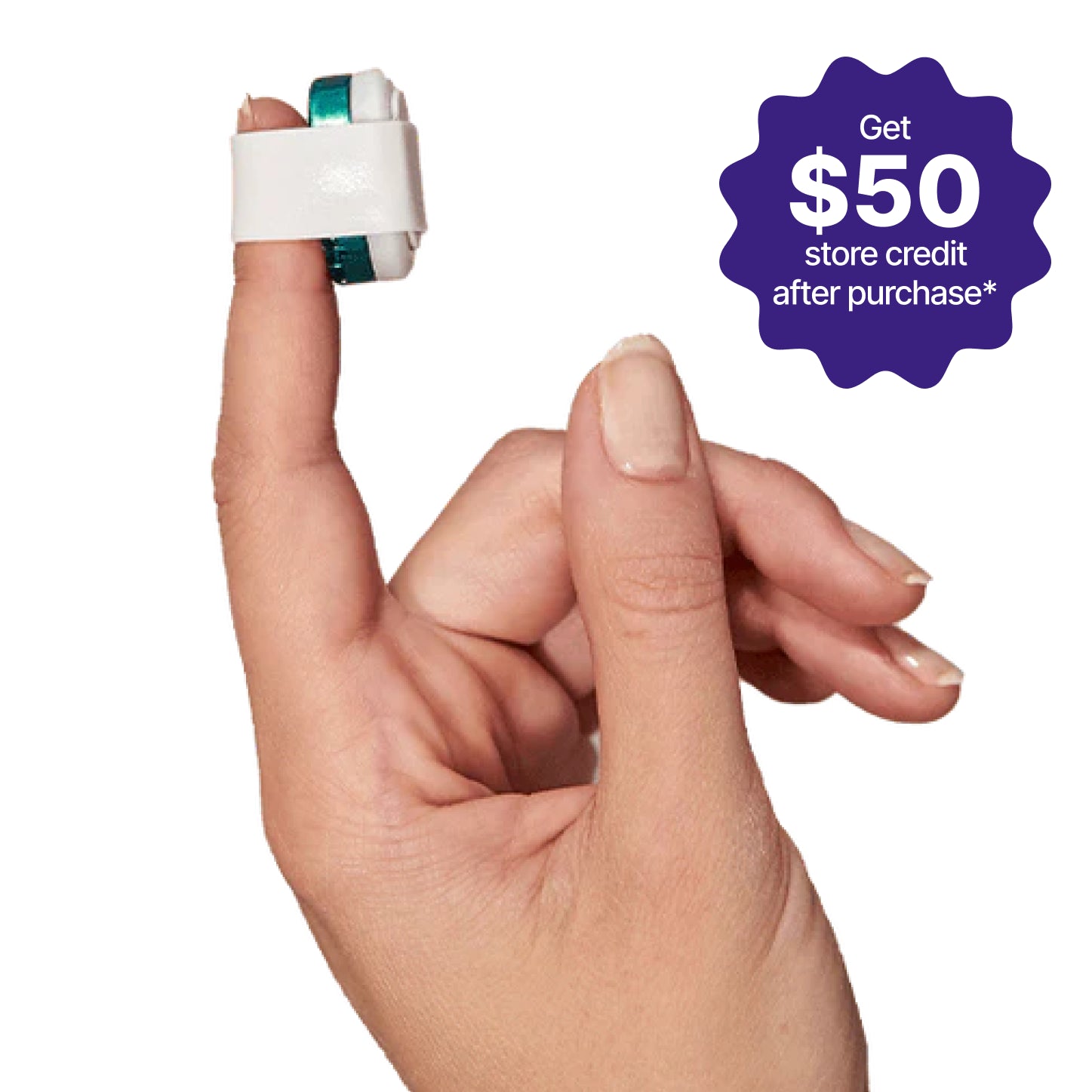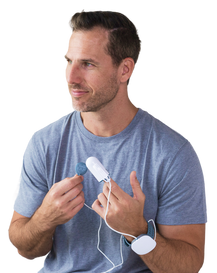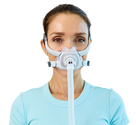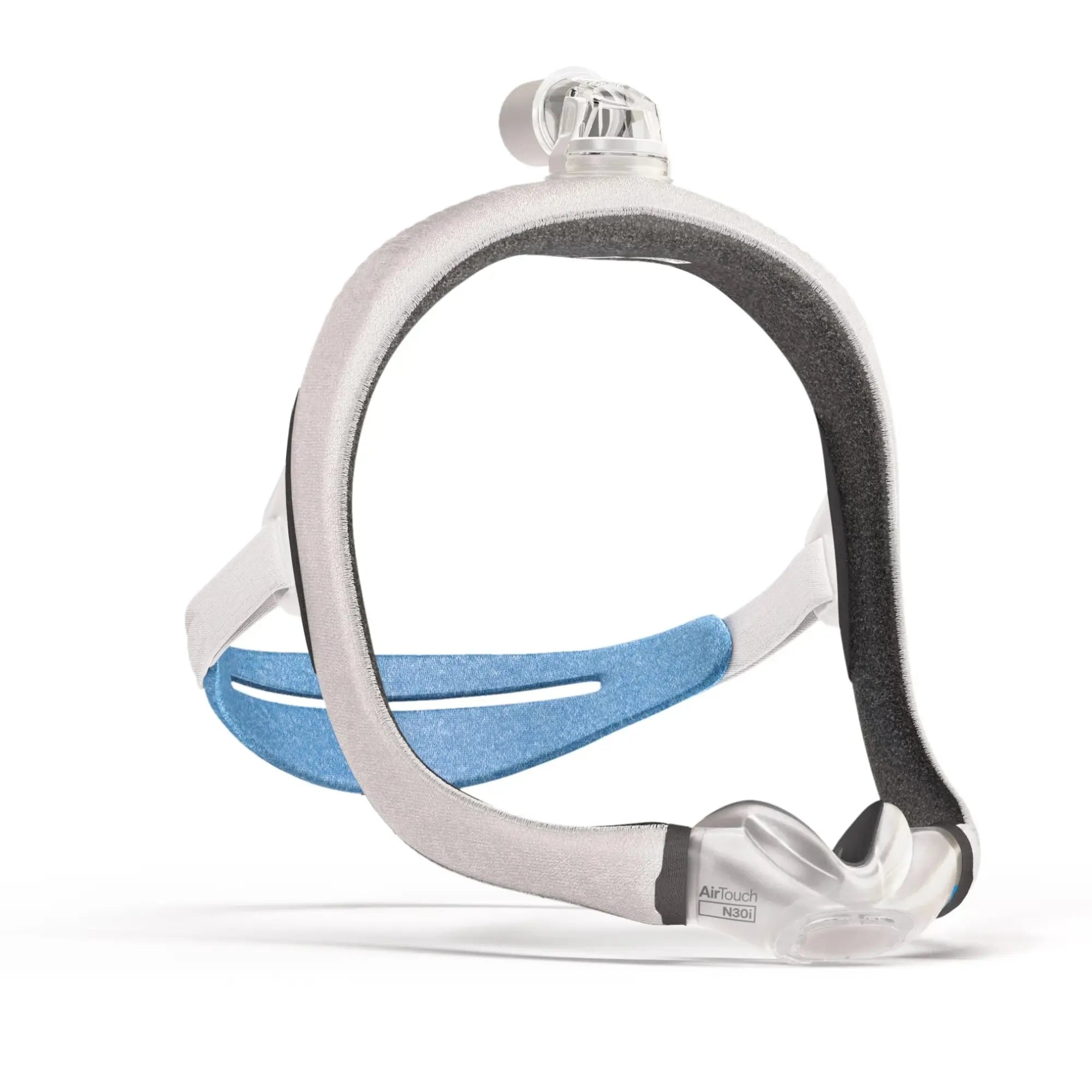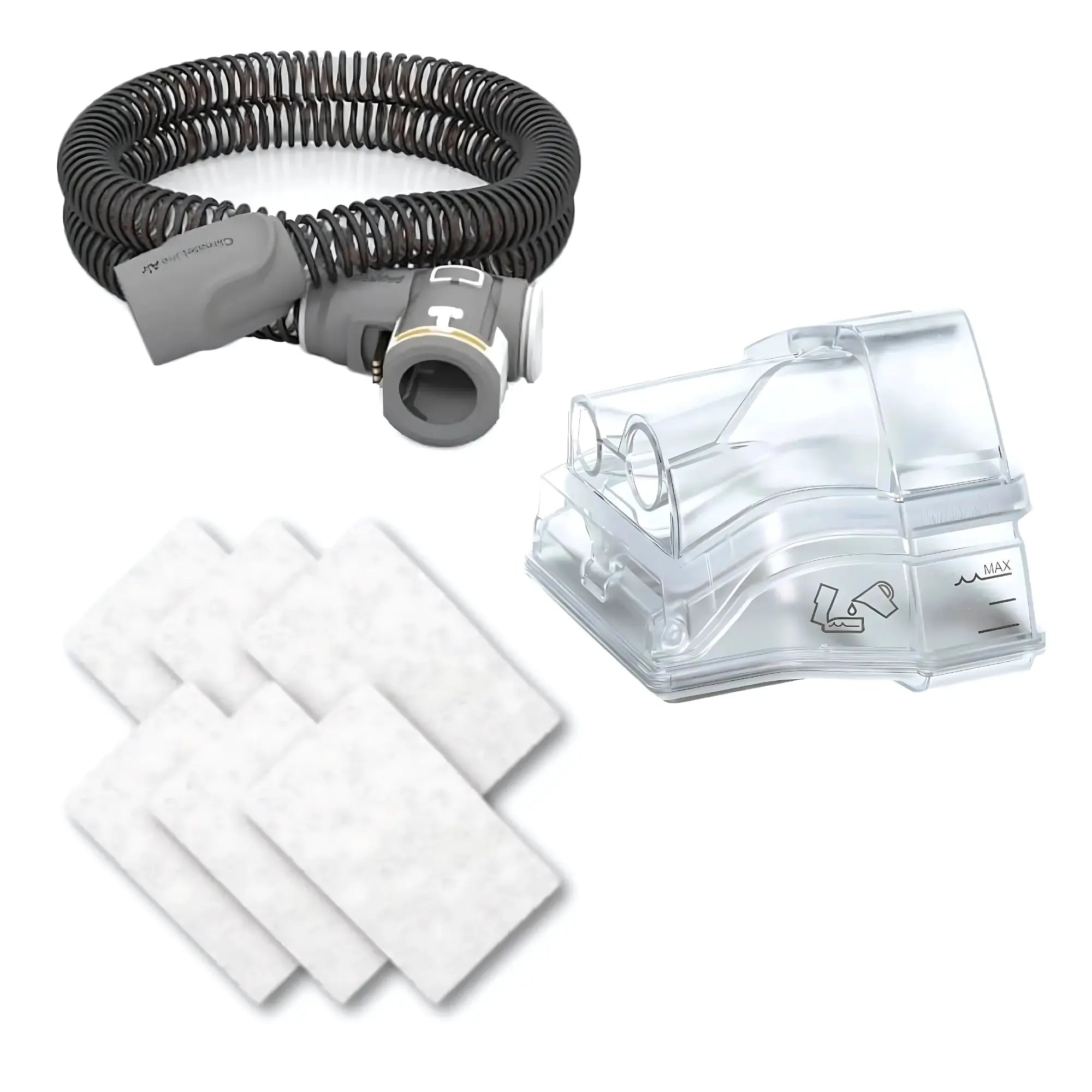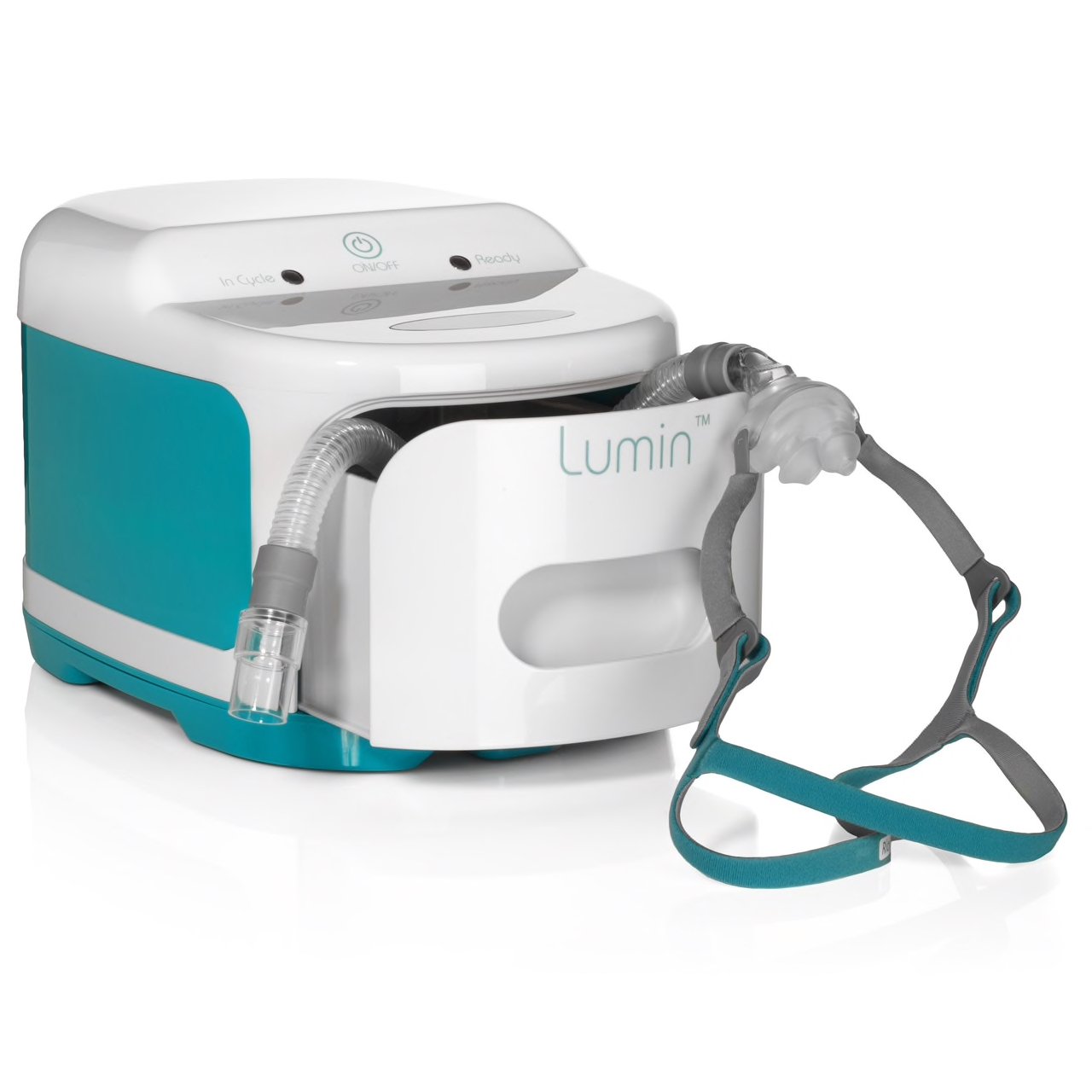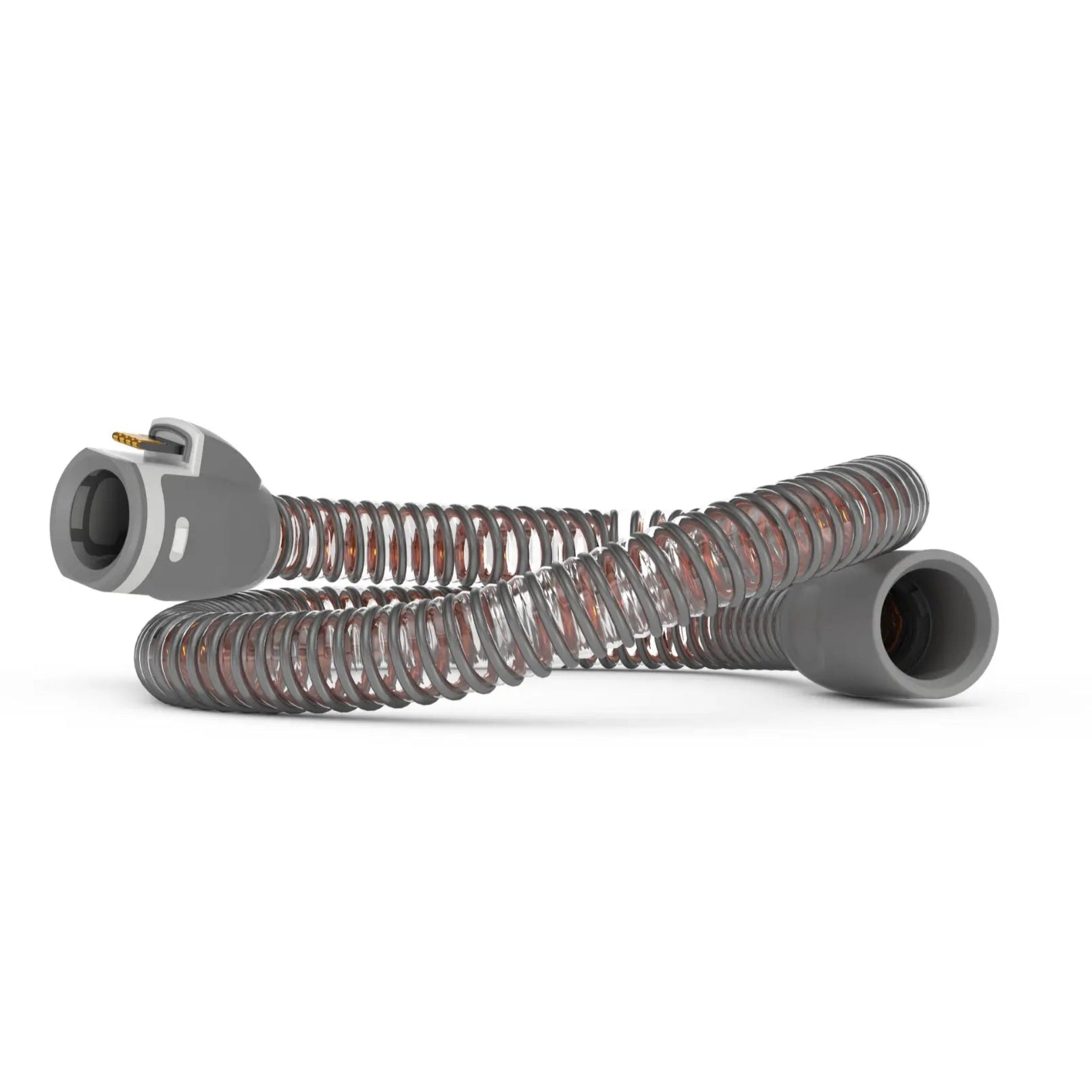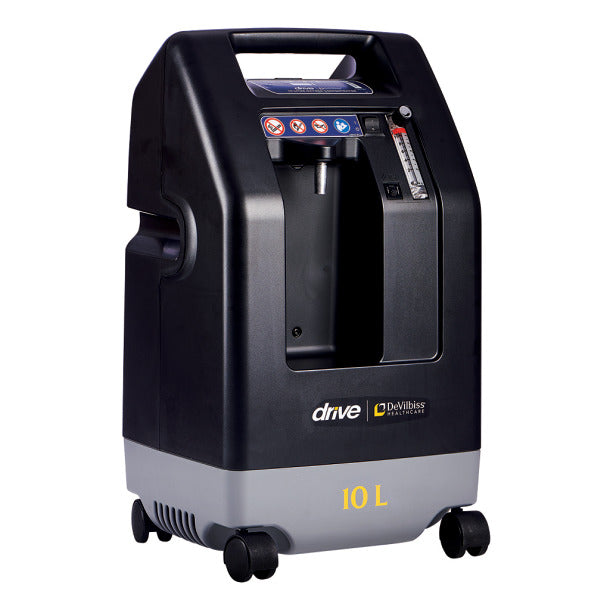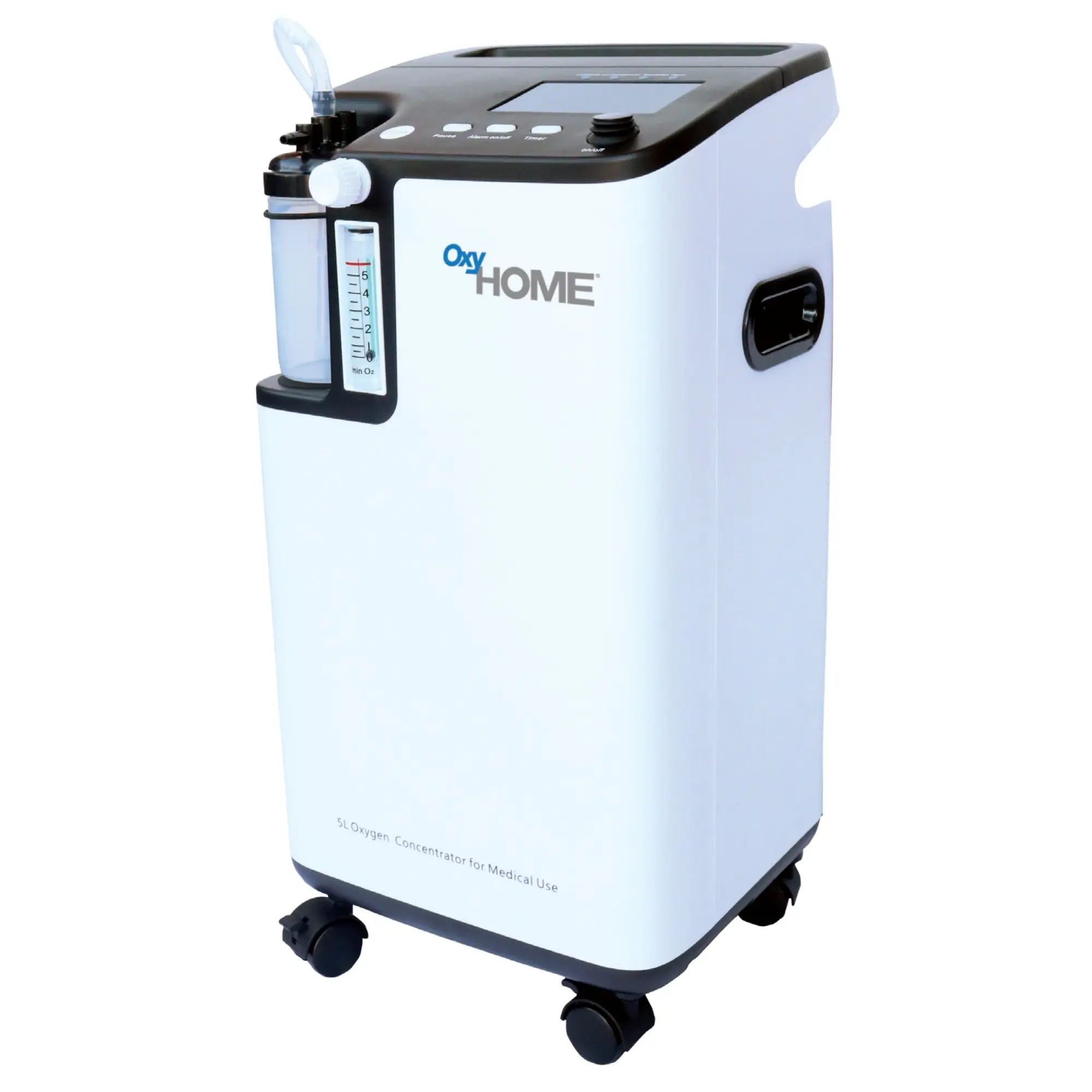Do you ever wake up in the morning feeling unrested, even after using your CPAP machine all night? If so, you're not alone.
While CPAP therapy is a lifesaver for millions of sleep apnea sufferers, adjusting to nightly use can come with its own set of challenges.
The good news is that many of these common CPAP problems have easy solutions, and addressing these issues early on is the key.
So, don’t give up. This blog post will equip you with practical tips to address mask leaks, discomfort, dry nose, bloating, and other CPAP issues disrupting your sleep.
If you are ready to transform your CPAP therapy and end the nightly struggle, dive in!
Tips for Wearing a CPAP Mask Comfortably
Conquering CPAP comfort is all about finding the sweet spot between a snug seal and a relaxed fit.
Here's how to make your mask feel more like a cozy companion and less like a party crasher.
3 Tips for Comfortable Mask-Wearing:
1. Mask Fitting: A good seal is critical to preventing leaks and maximizing therapy. But don't go all gladiator on the straps! A gentle yet secure fit is all you need. Most masks have adjustable points – play around until you find a comfortable tightness that keeps the mask in place.
2. Adjusting Straps: CPAP straps can sometimes feel like a double-edged sword. Here's how to tame them: If they leave red marks, loosen the straps slightly. You can also find soft headgear covers or even a silky scarf to add a touch of comfort.
3. Using Accessories: CPAP pillows are specially designed to cradle your mask and headgear, reducing pressure points. Mask liners are another great option – they act like a soft barrier between your skin and the mask, reducing irritation.
Common Issues and Solutions:
-
Hair Breakage or Balding: Tight straps can lead to breakage. Loosen them up a bit, or try a silky scarf or headgear cover. If your mask design doesn't work for your hair, talk to your doctor about exploring different mask types.
-
Rainout (Condensation): Condensation in your mask or hose (aka rainout) can be a real drag. Try lowering your humidifier setting or using a heated hose. You can also try moving your CPAP machine to a lower level (due to gravity). Another option is to use a CPAP Hose Cover , or a ClimateLineAir™ Heated Tube for -Airsense™ 11 and ClimateLineAir™ Heated Tube for Airsense™ 10 and Aircurve™ 10 . These helpful accessories keep things toasty and prevent moisture buildup.
-
Skin Irritation: Mask liners are your new best friend! They can help prevent irritation and make your mask feel softer. Choosing a mask made from a hypoallergenic material can also help. Remember, washing your mask and headgear regularly is key to keeping things clean and comfy.
How to Deal with CPAP Mask Leaks
Mask leaks are a common foe for CPAP users. They can be the top antagonist of a good night's sleep, disrupting your therapy and frustrating you. But fear not; leaks are beatable!
Steps To Prevent Mask Leaks
Here's how to create a leak-proof seal and turn your CPAP into a sleep machine, not a leak machine.
-
Adjusting the mask:
Most leaks stem from a less-than-perfect fit. The key is to find that sweet spot – snug enough to prevent leaks but loose enough for comfort. Adjust the straps evenly, ensuring a balanced fit around your face.
-
Checking for proper fit:
Not all masks are created equal. If you still have leaks, it might be time to explore different sizes or styles. Many masks even come with FitPacks, allowing you to try various cushion sizes to find the perfect fit.
-
Using mask liners:
These comfy liners act like a barrier between your skin and the mask, reducing leaks and irritation. Mask liners also absorb moisture, keeping things comfy throughout the night. Just slip them on the mask cushion and enjoy a leak-free night's sleep!
Regularly Replace Supplies
Even the best mask parts wear out over time. Worn cushions can lose their shape, leading to leaks.
Here's a rule of thumb: Replace your mask cushion every 3 months, headgear every 6 months, and other parts as your CPAP supplier recommends. Watch for signs of wear and tear, like cracks or loose straps, and replace them promptly.
Additional Tips and Considerations
Trial and Error: Finding the perfect mask can be a process of trial and error. There are various mask styles available, from nasal pillows to full-face masks. The AutoFit Mask is a great option for restless sleepers – it automatically adjusts to maintain a good seal throughout the night.
Professional Help: If you're still struggling with leaks, don't hesitate to reach out to your healthcare provider or a Sleeplay CPAP expert. They can offer personalized advice and help you find the perfect mask and fit for leak-free, restful sleep.
Solutions for CPAP Claustrophobia
Feeling a little claustrophobic with your CPAP mask? You're not alone.
CPAP masks can sometimes feel like an uninvited guest in your sleep space. But don't worry; we've got some hacks to help you conquer claustrophobia and become a CPAP master!
Choosing the Right Mask
Choosing the right mask can make a world of difference. Here are two options designed for those who experience claustrophobia:
-
Nasal Pillow Masks: These masks rest gently under your nose, leaving most of your face free and clear. Models like the ResMed AirFit P10 or the Fisher & Paykel AutoFit can be a breath of fresh air (literally!).
-
Full-Face Masks with Minimal Contact: These masks can naturally feel bulky, but some clever designs minimize contact with your face. Both the ResMed AirFit F40 and AirFit F30 , for example, are designed to feel lighter and more open, even as full face masks.
Practicing Wearing the Mask
Don't jump straight into bed with your mask. Get acquainted with it while you're awake!
Watch TV, read a book, or do some light chores while wearing it. This will help you desensitize to the feeling and make bedtime a breeze.
Relaxation Techniques
Feeling anxious? Fight back with some relaxation techniques!
-
Breathing exercises: Simple exercises like slow, deep breaths can calm your mind and body. Try inhaling for a count of 4, hold for 2, and exhale for a count of 6. Repeat as needed.
-
Muscle Magic: Progressive muscle relaxation involves tensing and relaxing different muscle groups. It's a great way to release tension and promote sleep. Tense your shoulders for a few seconds, then release. Repeat with different muscle groups throughout your body.
Preventing Dry Mouth and Throat Irritation
Waking up with a parched mouth and scratchy throat? Don't blame your CPAP machine – it can actually be your friend in the fight against dryness!
Here's how to keep things comfortable all night long.
Using a CPAP Humidifier:
Humidifiers add moisture to the air you breathe, preventing that dry mouth feeling. Heated humidifiers are a great option; they warm the mist for extra comfort.
Remember, finding the right humidity level is key – too much moisture can lead to rainout (condensation), so start with a low setting and gradually increase it until you find your sweet spot.
Using a Chinstrap:
A chinstrap can be your secret weapon against dry mouth if you're a mouth breather. It gently keeps your mouth closed while you sleep, preventing you from mouth breathing and getting rid of dryness.
Choosing a Full-Face Mask:
Full-face masks, like the ResMed AirFit F40 , DreamWear , or Fisher & Paykel Evora , can be a lifesaver for some CPAP users. They ensure you breathe through your nose all night, keeping your mouth comfortably shut and your throat moist.
Additional Tips:
-
Nasal Saline Sprays & Gels: These can soothe and moisturize your nasal passages, reducing irritation. Use them before bed for maximum comfort.
-
Proper Hydration: Drinking plenty of water throughout the day, especially before bed, can help keep your mouth and throat from drying out during sleep.
Dealing with Skin Irritation and Pressure Sores
Did you know improper mask fit is a leading cause of skin irritation for CPAP users?
Let's tackle those uncomfortable pressure sores and make your skin happy again.
Adjusting the Mask Fit:
It all starts with a good fit. A mask that's too loose can leak, and a mask that's too tight can cause irritation and sores.
The key is to find a snug but comfortable fit. Imagine your mask gives your face a gentle hug, not a chokehold. Check for leaks throughout the night and readjust as needed.
Using Mask Liners:
Think of mask liners as comfy pajamas for your face! These soft liners act as a barrier between your skin and the mask, reducing friction and irritation. They come in various materials, so find one that feels comfortable for you.
Moisturizing the Skin:
Keeping your skin hydrated is yet another key to preventing irritation. A good moisturizer can be your skin's best friend. Look for CPAP-specific moisturizers formulated for sensitive skin exposed to CPAP therapy.
Additional Tips:
Regular Cleaning: Just like your favorite shirt, your CPAP mask needs regular cleaning. Wash your mask cushion and headgear daily with warm water and mild soap. This removes dirt, oils, and bacteria that can irritate your skin.
Rotating Masks: Sometimes, switching things up can help. If you're prone to pressure sores, use different mask styles throughout the week to distribute pressure more evenly. Talk to your doctor or CPAP supplier about exploring different options.
Replacing Your Mask: Routinely change your mask, just like you replace your toothbrush. Worn-out masks can lead to increased leaks, facial redness or soreness, texture deterioration, and even bacteria buildup.
Managing CPAP-Related Aerophagia (Gas and Bloating)
It might surprise you to know that about 50% of CPAP users experience aerophagia , a fancy term for swallowing air while sleeping. This often leads to some pretty unpleasant symptoms like bloating, gas, and even belching.
If you are experiencing these symptoms, don’t be discouraged. There are ways to manage this and get back to a comfortable night's sleep.
Adjusting CPAP Pressure:
Sometimes, incorrect CPAP pressure settings can be the culprit behind aerophagia. If the pressure is too high, you might be more likely to swallow air.
Talk to your healthcare provider or a sleep specialist at Sleeplay – they can help you adjust the settings to deliver effective therapy without the bloat.
Trying a Different Mask:
The type of mask you use can also be the reason you experience aerophagia. Full-face masks, for example, might be more likely to cause air swallowing than nasal masks.
If you're struggling with aerophagia, consider trying a different mask style. Some masks designed to minimize air swallowing include nasal pillows or nasal masks with minimal facial contact.
Additional Techniques:
-
Yoga and Self-Massage: Certain yoga poses and gentle self-massage techniques can help release trapped gas and ease bloating.
-
V-COM Device: This small device attaches to your CPAP machine and helps reduce air swallowing by preventing pressure build-up during exhalation.
"Wish I had known about this product when I first started. Seems to help with aerophagia." - Denyer. D Verified Buyer at Sleeplay
Conclusion and Next Steps
As you’ve seen in this blog post, there are solutions for just about any CPAP hurdle you might face. From mask leaks and dryness to claustrophobia and bloating, we've covered ways to make your CPAP therapy a breeze.
Remember, a well-fitting mask, the right humidity level, and addressing any skin irritation can make all the difference in your CPAP therapy. Don't let minor issues disrupt your sleep apnea treatment!
Ready to level up your CPAP therapy?
Sleeplay has everything you need! Explore our selection of CPAP machines , masks, and all the latest accessories designed to optimize your comfort and treatment. Visit our product pages today and breathe easy on your journey to a better night's sleep!



